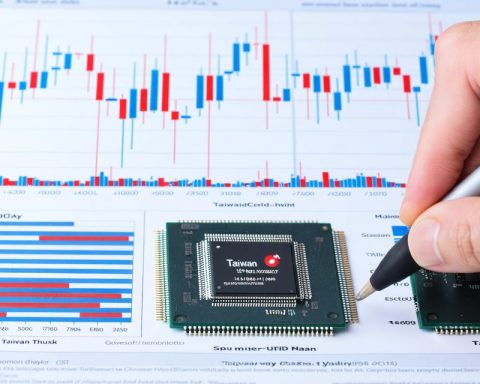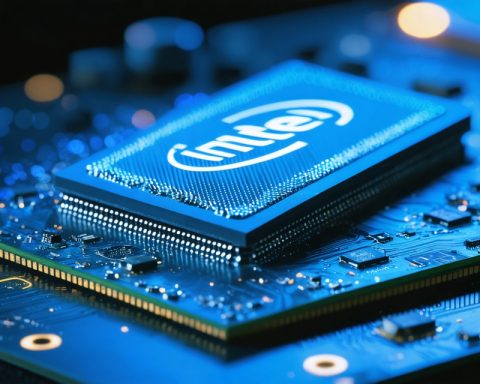- Nokia is issuing a €0.03 per share dividend with a 3.0% yield, reflecting strong financial management.
- The dividend takes up only 19% of Nokia’s free cash flow, indicating stability and room for growth.
- Anticipated 88.2% earnings per share growth may lead to a payout ratio of 40% next year, appealing to investors seeking steady returns.
- Nokia’s dividend history has fluctuations, with a compound annual growth rate of 1.7% since 2015.
- Investors face a dilemma: Nokia’s EPS growth is impressive, but dividends and reinvestments haven’t been prioritized, suggesting diversification might be prudent.
Nokia Oyj is making waves with its latest move to issue a €0.03 per share dividend on February 13th, boasting a 3.0% yield that positions it snugly within the industry norm. But the savvy investor knows there’s more than meets the eye with this move.
Nokia’s Financial Fortitude
Delve into Nokia’s dividend strategy, and you’ll uncover a bedrock of prudent financial management. The dividends, absorbing just 19% of the company’s free cash flow, paint a picture of stability and potential. With an anticipated 88.2% surge in earnings per share (EPS) over the next year, Nokia seems poised to allow its payout ratio to sit at a comfortable 40%. This scenario plays into an attractive narrative for investors eyeing steady returns.
Dividends: Past and Present
The path of Nokia’s dividends has been less than smooth, with history showcasing its fluctuations. From €0.11 in 2015 to a modest €0.13 in recent days, the compound annual growth rate sits at 1.7%. However, past reductions cast a shadow, making it a cautious pick for investors chasing consistent income.
Investor’s Dilemma
Despite Nokia’s striking 38% average annual EPS growth over five years, reinvestment and dividend increases haven’t topped its priority list. For those eyeing top-tier income stocks, this could present a conundrum. Investing based solely on dividend attractions might be risky; hence, diversification into other high-yield stocks could offer a wiser strategy.
As Nokia charts its course, investors are left to weigh the intricate balance of opportunity and risk. For further insights into Nokia’s strategy, explore their company updates and strategy shifts.
Nokia Dividend: A Hidden Gem or a Cautious Trap?
Nokia’s Market Forecasts and Predictions
Nokia’s strategic financial maneuvers, such as its recent dividend issuance, signal an intriguing outlook for the company. The anticipated 88.2% surge in EPS over the next year suggests Nokia’s potential for growth is substantial. Analysts predict that if this trajectory holds, Nokia might explore further dividend increases, enhancing shareholder value. However, the telecom industry is not without its challenges—a rapidly changing technological landscape and stiff competition necessitate agile adaptation.
Pros and Cons of Investing in Nokia
Pros:
– Growth Potential: With significant EPS growth forecasts, Nokia presents an opportunity for lucrative returns.
– Stable Payout Ratio: A conservative payout ratio at 40%, post-growth, minimizes the risk of unsustainable dividends.
– Industry Position: Strong, established presence in the telecom sector offers a foundation of reliability.
Cons:
– Dividend History: Fluctuating dividend history may deter investors seeking reliability.
– Reinvestment Focus: Prioritization of reinvestment over dividend increments could lead to disappointment for income-focused investors.
– Market Volatility: Exposure to technological shifts and global economic factors may introduce volatility.
How Nokia’s Strategy Aligns with Current Trends
Nokia’s emphasis on advancing 5G technology and digital transformation aligns seamlessly with current industry trends. This focus not only supports potential revenue growth but also positions Nokia as a forward-thinking entity. Their strategic approach to cash flow management and disciplined dividend allocation suggests an alignment with sustainable business trends, attracting investors looking for economic, environmental, and governance balance.
Suggested Related Links
To gain deeper insights into Nokia’s strategic undertakings, explore their corporate updates and technological innovations:
– Nokia Official Site
Important Questions Answered
1. What is the potential growth forecast for Nokia in the telecom industry?
Nokia’s forecast anticipates an 88.2% rise in its earnings per share. This points to substantial growth potential, heavily fueled by initiatives in 5G technology and digital transformations, which are pivotal to remaining competitive in the telecom sector.
2. Should investors be concerned about Nokia’s dividend history?
While Nokia’s dividend history has seen fluctuations, their current strategy, consuming only 19% of free cash flow for dividends, suggests a cautious approach aimed at stability. Therefore, investors focused on long-term growth and stability might still find Nokia appealing.
3. How does Nokia’s focus on 5G technology affect its investor appeal?
Nokia’s involvement in 5G showcases its commitment to future-proofing its technology portfolio. This positions the company advantageously within a rapidly evolving market, potentially increasing its attractiveness to investors prioritizing innovation and sector leadership.



















